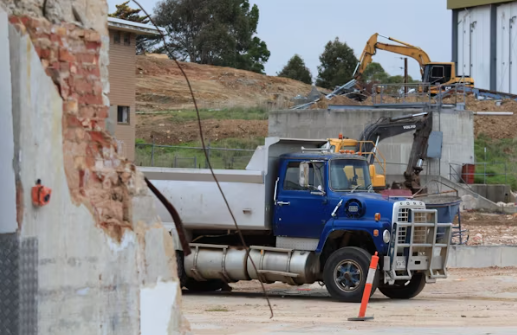Australia has this thing with hills. You know it if you have ever driven around parts of Brisbane’s outer suburbs, the steep blocks in Sydney’s northern pockets, or those leafy Victoria hills where houses cling to earth like they’re determined to stay put. Beautiful views, yeah. But try building on them.
Suddenly, the dream home feels… complicated. Dirt shifting when it rains. Edges are crumbling a little more each year. And someone always says the same sentence. You probably need a retaining wall.
Not all retaining walls are equal, though. Brick and blocks, sure. They have their place. But you chat to builders or look at some of the bigger civil jobs around the country, and you hear about a Shotcrete Retaining Wall more often now, especially on tricky land.
It is not fancy by name. Shotcrete sounds a bit industrial, like something used in tunnels or mines. And, well, it is. But more and more homeowners are seeing it work wonders on steep residential sites, too.
So, What Actually Makes A Shotcrete Retaining Wall Different?
Think of concrete, but sprayed and pressurised, applied like a thick protective shell over the earth. Steel mesh and sometimes anchors are reinforcing the slope—the wall forms where the land needs it, instead of forcing the land to fit some awkward shapes.
That is the quiet beauty of a Shotcrete Retaining Wall. Flexibility. Strength. A bit of engineering magic that listens to the ground rather than arguing with it.
Australia Has Dramatic Dirt
Anyone who has watched a hill wash out in heavy summer rain gets the point. Our weather swings. Hot, dry spells then sudden downpours. Soil expands. Contracts. Some of it is clay. Some sandy. All of it can move when you least want it to.
A Shotcrete Retaining Wall grips. It reinforces. Almost hugs the slope. That is why you see it near highways, rail lines, and mining access roads. If those industries trust it, it says something for residential use.
But the interesting shift is seeing it turn up in backyards, too.
People Are Landscaping Smarter Now
Back in the day, a sloping yard meant a casual shrug and a lawn mower that felt like a mountain goat. Or maybe a timber sleeper wall that looked neat for a bit, until time and termites had their say.
Now? Folks want usable space. Terraces. Garden zones. Outdoor entertaining pads. A Shotcrete Retaining Wall helps carve that shape into land that otherwise wastes potential. It lets families create real space, not just patchy grass sliding downhill.
And it is not always rough concrete left bare. You can texture it. Colour it. Rock finish it. Nature-inspired faces that look like sandstone cliffs. Seen some nice ones in Queensland and NSW recently. Almost art disguised as structure.
The Thing Homeowners Don’t Realise Until They Build On A Slope
Retaining walls are structural. Load bearing. They are not weekend DIY projects if you want them to last. The ground pushes. Water builds pressure. Time tests every joint.
A Shotcrete Retaining Wall handles that force with a kind of solid calm. Engineering behind it. Experience behind the spray gun. Not all trades are the same, and not all projects should rely on guesswork.
You talk to builders who work on steep land, and they say it straight. When you really want stability, this method works. On awkward access sites. Tight blocks. Up against cut earth.
The Cost Conversation Nobody Likes But Needs
Let’s be real. Stability is not the cheapest part of building. A Shotcrete Retaining Wall might not be the bargain special you see in Bunnings brochures. But ask someone who tried to save money on a retaining system that later shifted, cracked, bowed, or needed replacing.
They will tell you. Better to do it properly once. Especially on land that loves gravity a bit too much.
And that long lifespan feeling? Worth it. Peace of mind has a value, too.
Diy? Probably Not Here.
There are things you can DIY. Deck oiling. Garden beds. Maybe even a concrete path if you like that hands-on challenge. But spraying concrete, reinforcing slopes, calculating pressure? That is specialist gear and know-how.
A proper Shotcrete Retaining Wall comes from a team that does it all the time. You can tell when it is done right. Clean lines. Firm structure. No nervous cracks forming six months later.
Every Sloping Block Has A Story
Sometimes the wall gives you a backyard where kids play cricket without balls rolling into the neighbour’s yard. Sometimes it supports a driveway built on a hillside. Sometimes it holds back the earth so the house foundation can breathe easy.
That’s the thing I like about a Shotcrete Retaining Wall. It feels like a quiet hero in landscapes. Holds everything in place so life can happen. Barbecues. Veggie patches. Footy practice.
People admire the house. Rarely the wall behind it. But both matter.
Final Thought
Australia is beautiful but unpredictable—our land shifts. Our weather tests things. And when you build on a slope, reality hits quickly.
Choosing a Shotcrete Retaining Wall from Civocrete is not about trend. It is about practicality. Strength. A smart way to work with the land instead of fighting it.
So if you are staring at a block thinking, how on earth do we make this work… You are not alone. Lots of Aussies are doing the same dance with gravity and soil.
Maybe the answer is not flattening your dream or downsizing the plan. Maybe it is reinforcing the land properly so the dream has room.
A Shotcrete Retaining Wall might not be glamorous dinner table talk, but it is one of those building choices that pays you back with stability and space.
Space to plant. Space to entertain. Space to breathe, knowing your land is held.
And honestly, that feels like a bit of freedom. The kind that lets a steep block become a home, not a headache.

